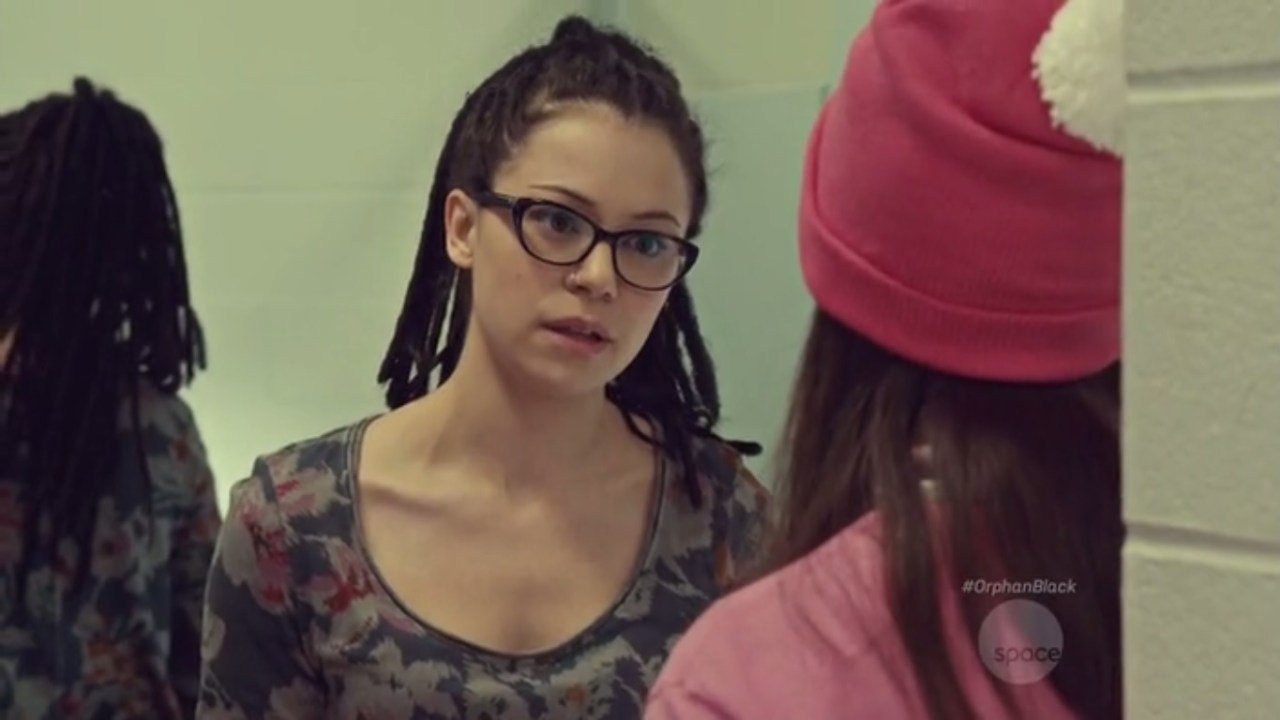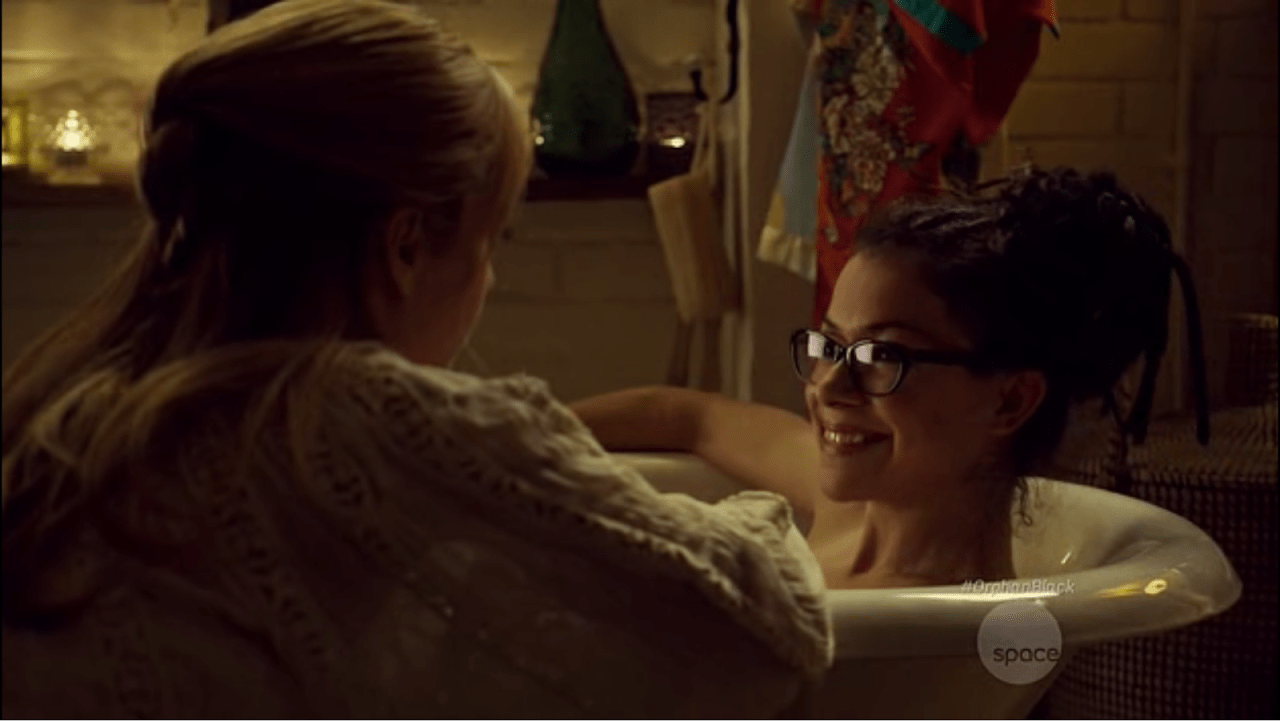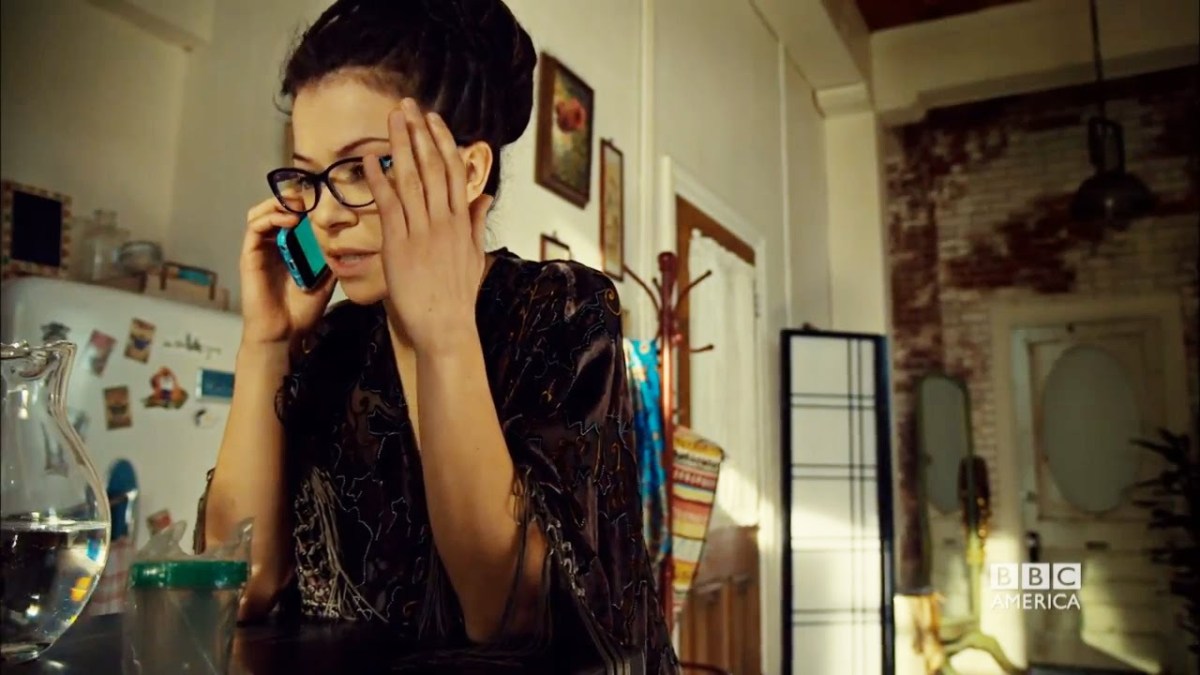Welcome to our Orphan Black science recaps, where Casey, a graduate student in genetics and developmental biology, and Nina, a professional science communicator, examine the science in each episode of OB and talk you through it in (mostly) easy-to-digest terms. Check out our regular OB recap for this episode here.
If you haven’t watched the latest episode of Orphan Black, be forewarned: there will be spoilers. There will also be crazy science.
Nina: The main plot for this episode involved Cosima chasing Alison around for a urine sample. Delphine shows up at Shay’s apartment to inform Cosima that her misfolded protein levels are worrisome and says that she needs a sample for urinalysis. Cosima decides that she doesn’t feel like being the science that day and plots to have Alison pee in the cup instead.

I need your pee. Why? I don’t know. Science?
To be honest, a big part of me was expecting Alison to deliver on her end with a urine sample, only to find that she’s beginning to show indicators of the Leda disease (because apparently I was craving to be devastated), but instead the show gutted us in a different way by having Cosima’s bathtub scene with Shay be rudely interrupted by uterine hemorrhaging.
I was curious about why Delphine specifically wanted a urine sample and not, say, blood. It turns out that a fair amount of research has been geared toward detecting prion proteins in urine and determining their infectivity. There’s a precedence for it: I also learned that a lot of fertility treatments use hormones derived from human urine. The more you know.
Prion disease is tough to pin down and diagnose. Really the only way to fully diagnose it is to do what Cosima and Scott did to diagnose Seth: examine brain tissue post-mortem. Dyad is putting a lot of effort into keeping track of the clone’s symptoms and looking for the presence of this mysterious protein because that’s really the next best thing (presence of protein does not necessarily indicate presence of disease; prions can also naturally occur in a non-harmful form). More interestingly, studies have identified that prions can exist in different forms in different tissue of infected people—so a person with a prion disease like Creutzfeldt-Jakob can have a definitely infectious form of the prion in their brain tissue, but a different, potentially less or non-infectious version of the prion in their urine. I say potentially because most of these studies for infectivity were either inconclusive, inconsistent with studies that tried to replicate their results, or straight-up didn’t have equipment sensitive enough to test. Generally it’s thought that the form of prion found in urine is unlikely to transmit disease.
That said, the same is generally thought about prion disease and semen, and Castor’s disease has already shown the contrary.

Let’s just pretend that what happens next doesn’t happen.
Casey: Cosima avoided surrendering her urine, but then unfortunately experienced uterine hemorrhaging. This is most likely caused by the extensive tissue damage in Cosima’s uterus causing a massive rupture. Unfortunately, this means Cosima’s period of well-being is over, and it’s time to start scrambling for her life. The best short-term option would be Helena’s fertilized eggs that are still hanging out in Felix’s loft, or perhaps a bone marrow transplant. This could temporarily hold Cosima over until they can develop a cure.
So now the focus turns to Rachel deciphering Ethan’s code. This will eventually allow for a gene therapy cure, which can halt production of the prion in Cosima’s body. The only question is whether or not Rachel will be able to correctly and quickly get the decoded information to Scott. This information can potentially save Cosima’s life, as well as prevent Alison, Rachel, Tony, Krystal, and any other currently healthy clone from experiencing the deterioration Cosima has gone through. Here’s hoping that Rachel can successfully #SaveCosima.
Casey Griffin is a graduate student in genetics and developmental biology. She dissects mouse hearts, does lots of PCRs, and nerds (and cries and screams) about Orphan Black. You can check out her OB Science Time Tumblr posts here.
Nina Nesseth is a professional science communicator, emerging playwright, and serial tea-drinker. She’s happiest when science-ing at people (yes, that’s “science” as a verb) and watches way too many movies (but she lacks stamina and falls asleep if she tries to watch two in a row). You can find her on Twitter @cestmabiologie.
—Please make note of The Mary Sue’s general comment policy.—
Do you follow The Mary Sue on Twitter, Facebook, Tumblr, Pinterest, & Google +?









Published: Jun 5, 2015 12:13 pm